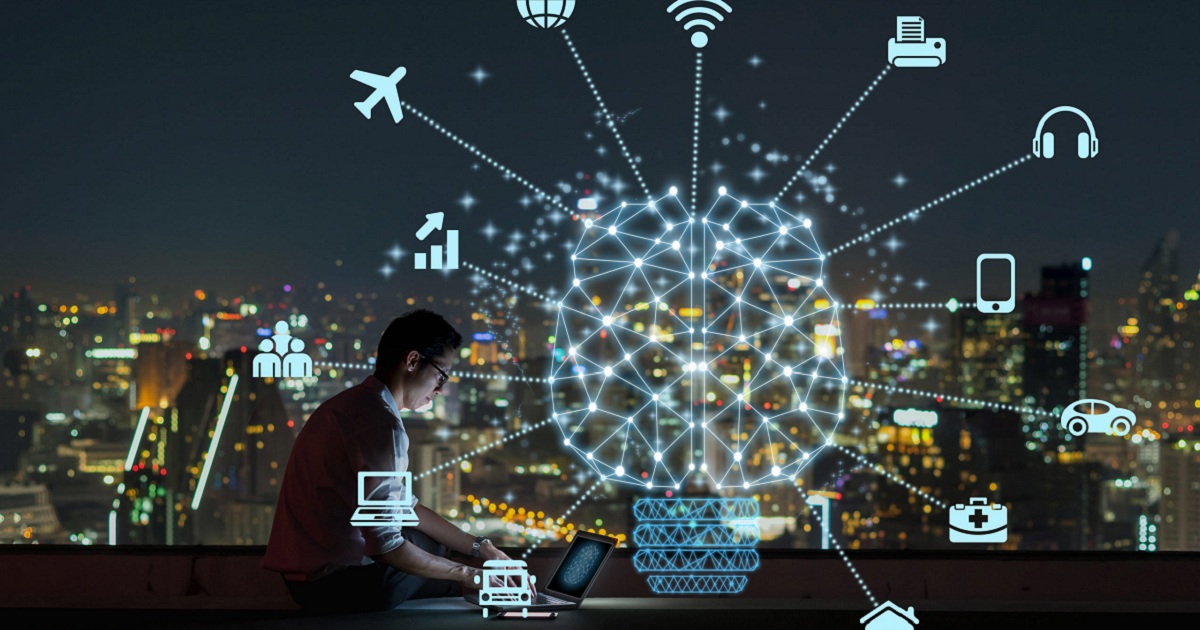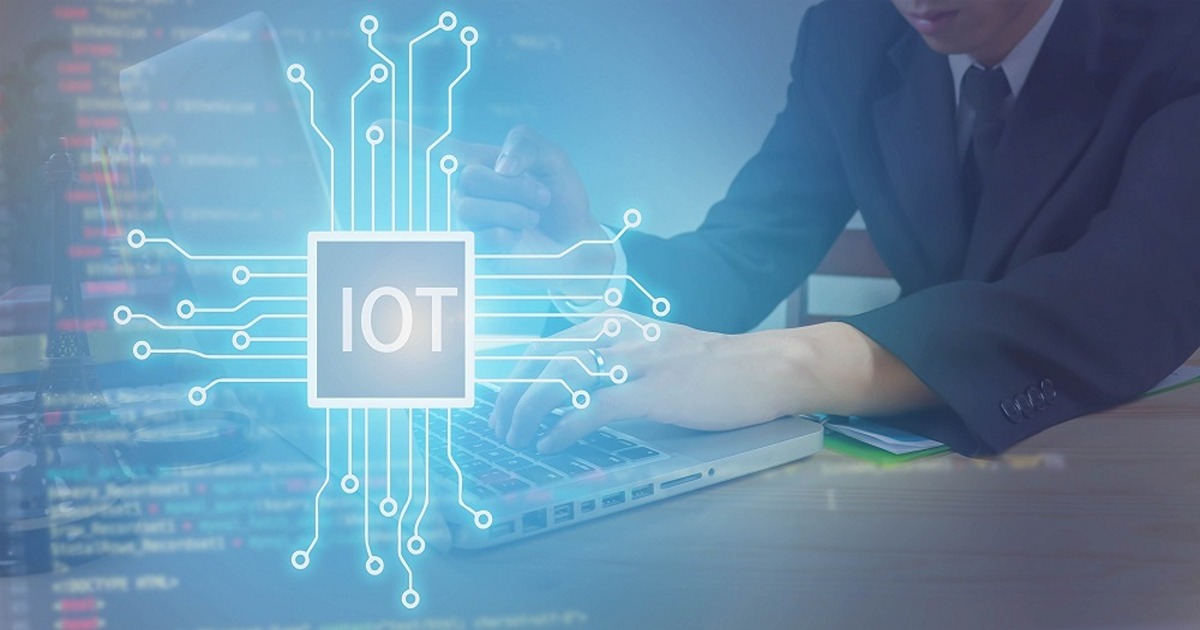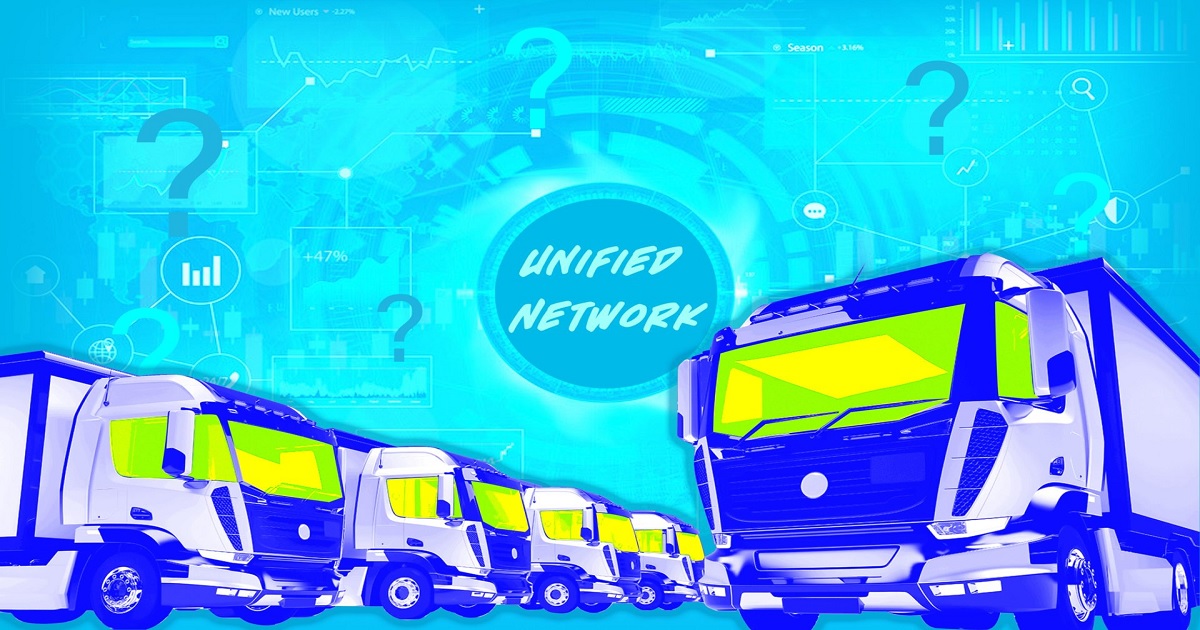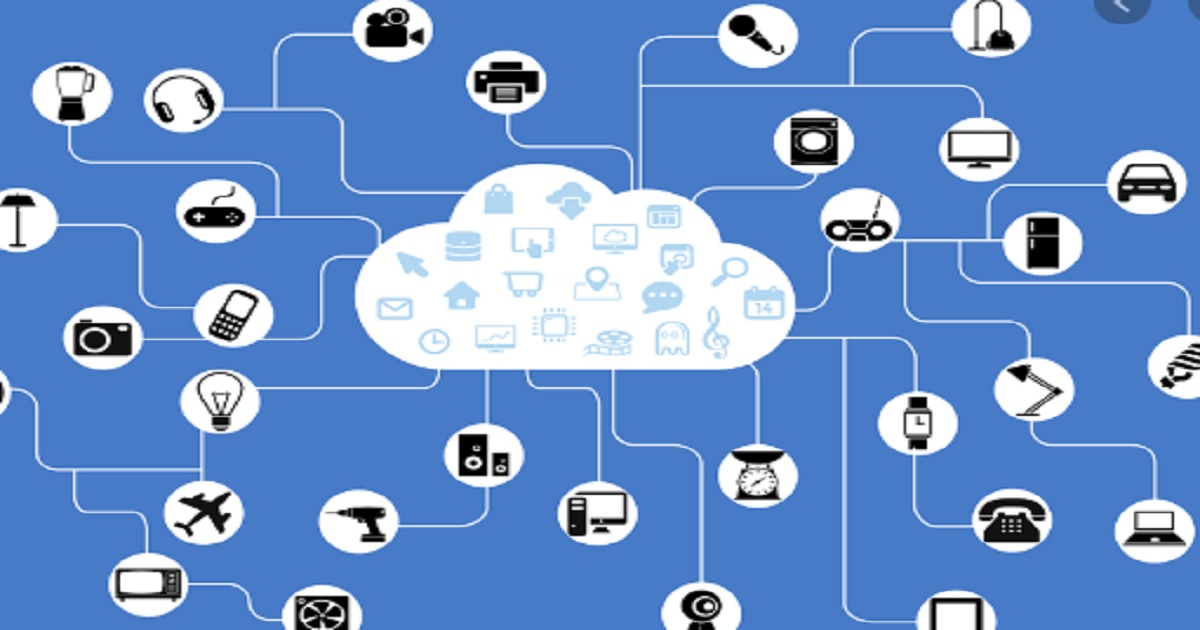
IoT Security
Article | July 17, 2023
We live in the age of technological advancement and progress is happening at an unprecedented speed. With newer technologies emerging every day, it is unreasonable to not be intrigued by their implications on business. Artificial Intelligence and the Internet of Things are two independent technologies that are changing the face of several industries, one advancement at a time. While Artificial Intelligence promises to automate and simplify everyday tasks for humans, the Internet of Things is rapidly bridging the gap between physical and digital. The convergence of these two technologies promises to simplify lives through connected devices.
This convergence has already been witnessed in several industries and is being hailed as the Artificial Intelligence of Things or AIoT. Experts across industries claim that Artificial Intelligence of Things is set to redefine the future of the industry and mold intelligent and connected systems.
Applications
The Artificial Intelligence of Things is a congruence of AI and IoT infrastructures being used to achieve several applications across industries more accurately and efficiently. We already know that IoT generates scores of data, but this data is pretty useless in its raw form, it the organization, analysis, and interpretation of the data that makes it invaluable. Manually parsing through all of that data can take months given the sheer volume of it. This is where AI comes in. Modern AIs are programmed to efficiently handle large amounts of data to turn them into coherent pieces of information. Together, IoT and AI make for a great technological tool for business. Take a look at some other applications of AIoT in business.
Marketing
Good marketing comes from a series of well informed and well-researched decisions. For example, deciding on where the budget is allotted, what market strategy is put into action, or which campaign is prioritized. While human decisions can be fallible, most businesses today cannot afford to make big mistakes. This is where AIoT turns into a big help. Through the Artificial Internet of Things, marketers can get reports about market trends, probabilities, customer behavior, and more, most of these in real-time. These reports help marketers make informed decisions that are much likely to result in success.
Drones
Drones are one of the biggest advancements of IoT technology. In fact, drones are so popular with such varied applications, that drones can be talked of as a separate technology in themselves. These flying machines were originally invented for military purposes such as surveillance or weapon deployment but markets have rapidly found utility in drones for many other purposes. Today, they are being used as delivery bots, nature conservation, surveillance mechanisms, research tools, safety equipment, field substitutes, agriculture, geo-mapping, and a lot more.
With AIoT, drones have become smarter, more adaptable, and way more useful. As Artificial intelligence allows drones to make minor decisions, their applications have gotten wider and more sophisticated. In a brilliant use case of AIoT, a drone enthusiast named Peter Kohler has started the Plastic Tide Project which uses drones to locate plastic on the ocean surfaces. The drones are powered by AI which allows them to locate plastic and not other elements like marine life or corals. These drones then hover over the plastic waste and speed up the ocean cleaning process.
Drones can be used to map farmlands, determine the optimum farming processes and schedules, count the cattle, monitor their health, and even undergo certain physical tasks in agriculture, all thanks to the Artificial Intelligence of Things.
AR/VR
Augmented Reality and Virtual Reality are both heavily data-dependent technologies. There cannot be a convincing virtual reality unless there is data available for creating the said simulation. AR and VR have both found applications in several industries like healthcare, gaming, training, education, design, and manufacturing. Most of these applications fall in the critically important category and therefore, the AR or VR must be accurate to the minutest detail. This can only be achieved with mounds of data from the actual reality. With the help of IoT, this data is not accessible, and AI interprets it in a way that it can be turned into several different formats.
Infrastructure
One of the most useful applications of AIoT has been infrastructure. Artificial Intelligence of Things has fuelled innovation and planning for smart cities across the world. With the open data available for urban planning, cities are now becoming safer and more convenient to live in. AIoT has also made it possible to optimize energy consumption and ensure safer roadways through traffic surveillance. With smart energy grids, smart streetlights, and smart public transport, energy consumption and carbon emissions are both controlled.
Moreover, AIoT has given a whole new life to urban design, and now comfort and aesthetics do not have to be sacrificed for convenience.
Energy
As we discussed above, Artificial Intelligence of Things is instrumental in optimizing energy consumption in urban areas. However, the applications of AIoT in the energy sector are not limited to smart cities. Many utilities providers across the globe are already gearing up to incorporate AIoT in their process. The expected benefits from the Artificial Intelligence of Things range from improved grid management, power quality, reliability, and restoration resilience to enhanced cybersecurity and better integration of distributed energy.
Most utilities providers have still not adopted the new technology but with the increasing complexity of grid management and higher customer experience demands, there is no denying that they will have to deploy AIoT solutions to tackle these.
Robotics
In layman’s experience robots are either extremely sophisticated machines from sci-fi that undertake every task humans can and more, or they are these clunky things that can pass you the butter. In practice, however, robotics is a lot more practical than these ideas. Today, robotics is at the forefront of AIoT applications.
The Artificial Intelligence of Things is being used in robotics for several applications such as surgical procedures, manufacturing, and even first aid. In healthcare specifically, AIoT powered robots are taking huge leaps. Robotic surgery eliminates the chance of human error and offers a much more precise surgical experience with minimum invasion. This enhances the success rate of surgery and aids faster recovery in patients.
Logistics
The convergence of AI and IoT has made a huge impact on logistics as it is now possible to automate the entire process, track the goods, as well as monitor the entire trajectory from deployment to delivery. With the addition of drones and robotics, even the last mile delivery can be automated with zero human intervention. This makes for faster delivery, better customer experience, as well as a well-designed supply chain management system.
Industrial
As the concept of adding smart sensors to physical objects emerged in the 1980s, a new term was coined a decade later—Industrial Internet of Things. IIoT is now a huge phenomenon of automating and optimizing industrial operation technologies across the globe. As IIoT is deployed in several factions of the industry including manufacturing, supply chain management, human resources, and energy management, these devices and sensors generate a massive amount of data daily. The data generated from even a single process can be dizzying, and this is where AI makes a difference. AI can not only manage this data but also find the relevant points of data and analyze it for business purposes.
Edge Computing
Artificial Intelligence has given way for another technology i.e. Edge computing. Edge computing allows a device to process data itself rather than rely on remote data servers to do so. It may seem like a small feat but think of the possibilities it offers—drones don’t have to be connected to find their way, smart appliances can interact with each other without a shared network, and thermostats can change the temperature based on your past preferences automatically.
Edge computing is by no way a new technology but, in the future, it offers huge possibilities like smart automobiles and aircraft, or even robots in every home.
Frequently Asked Questions
What are the examples of Artificial Intelligence?
Some of the most common examples of Artificial Intelligence are Google Maps and Uber. The AI allows you to find routes to any destination and even hail rides there.
How does AI help IoT?
Artificial Intelligence can comb through millions of data points in seconds to come up with patterns and analyze them. As IoT generates a lot of data continuously, AI is a powerful and complementary technology that helps IoT.
Is IoT related to Artificial Intelligence?
Internet of Things and Artificial Intelligence are two separate technologies that interact with each other well as their functions aid each other progress. AI helps with the data generated by IoT, and IoT provides relevant data for AI to analyze.
{
"@context": "https://schema.org",
"@type": "FAQPage",
"mainEntity": [{
"@type": "Question",
"name": "What are the examples of Artificial Intelligence?",
"acceptedAnswer": {
"@type": "Answer",
"text": "Some of the most common examples of Artificial Intelligence are GoogleMaps and Uber. The AI allows you to find routes to any destination and even hail rides there."
}
},{
"@type": "Question",
"name": "How does AI help IoT?",
"acceptedAnswer": {
"@type": "Answer",
"text": "Artificial Intelligence can comb through millions of data points in seconds to come up with patterns and analyze them. As IoT generates a lot of data continuously, AI is a powerful and complementary technology that helps IoT."
}
},{
"@type": "Question",
"name": "Is IoT related to Artificial Intelligence?",
"acceptedAnswer": {
"@type": "Answer",
"text": "Internet of Things and Artificial Intelligence are two separate technologies that interact with each other well as their functions aid each other progress.AI helps with the data generated by IoT, and IoT provides relevant data for AI to analyze."
}
}]
}
Read More

IoT Security
Article | June 28, 2023
The concept of "never trust, always verify" is the foundation of the relatively new security architecture known as "zero trust." Zero trust requires that all users and devices be verified every time they connect, even from inside the "moat," in contrast to the conventional castle-and-moat security architecture, which automatically trusts users and devices located within a network's perimeter.
Companies are being forced to reconsider how they safeguard their networks by the internet of things (IoT). Unmanaged smart gadgets connected to the internet expand the number of potential access points for hackers to compromise your security when they are added to a network.
Zero Trust Security Expansion for IoT
After establishing it for users and their devices, organizations must extend zero-trust security to cover unmanaged, non-user devices too. To do this, they require zero trust identity management technologies that automatically register devices, issue credentials, and offer password-less authentication.
Device Visibility
A device may be infected with malware or have a security breach if performance problems or bugs start to appear frequently. In addition, a malfunctioning device may be more vulnerable to attack. Therefore, organizations require device health monitoring that can automatically identify problems and flag them for remedy in order to establish and maintain zero trust security for IoT. Some cutting-edge solutions can also automatically prevent an impacted device from making further connection attempts or carrying out corrective actions without requiring human participation.
The Principle of Least Privilege (PoLP)
The principle of least privilege (PoLP), which argues that any user or device should only obtain the bare minimum access privileges necessary to perform their job functions, is widely used in conjunction with zero trust security. Therefore, organizations must establish the minimal level of network access required for each device to carry out its functions before limiting its potential privileges in order to deploy PoLP for IoT. Implementing identity and access management (IAM) tools and guidelines that support zero trust and PoLP for devices is one approach to accomplishing this.
Security Monitoring
There are other zero-trust security monitoring programs created especially for IoT, such as Palo Alto Networks' IoT Security, which was previously discussed. Businesses can also utilize tools to monitor devices and network traffic, such as next-generation firewalls and intrusion detection and prevention systems (IDS/IPS). The zero trust security solution for IoT must include monitoring in addition to as much automation as possible so that threats can be identified, contained, and remedied even when no one is there to press a button or disconnect a device manually.
One of the leading causes of zero trust security projects failing over time is that people stop adhering to them once they get complicated. This is especially true for IoT security that operates on zero trust. In addition, it can be logistically challenging to keep remote, unmanaged devices at zero trust.
Read More

Industrial IoT, IoT Security
Article | July 11, 2023
As consumer demands evolve, fleet managers are turning to IoT to deliver products faster and more efficiently. The progress being made in edge computing represents the full potential of IoT: the power of data on the move. However, operating on the edge also reveals some of IoT’s greatest challenges: maintaining network security as the number of endpoints multiplies; rethinking traditional business models as industries become increasingly interdependent; and, perhaps most importantly, establishing a seamless, reliable network across borders, cultures, and regulatory environments.
Read More

Article | April 14, 2020
Organizations around the world are coping with a variety of challenges related to the COVID-19 outbreak. Many companies are struggling to convert their processes from ‘in-office’ to ‘remotely accessible’. And, they’re scrambling to find new ways to “remote” tasks – with “remote” now becoming a verb. For example, we’ve heard from many customers that adding or expanding remote employee access capabilities is a hot topic. One such customer told us that they went from 9% of their workforce working remotely, to 52%. Wow! That’s not only a substantial change to operations and processes – it also directly impacts the company’s security posture. The challenge facing OT security practitioners is daunting. We absolutely must secure the people and systems responsible for saving mankind from an alien super-virus pandemic. But, while the bad guys are lobbing attacks from afar, the good guys are acting behind the scenes like NPCs (non-player characters). They’re bypassing the security systems we developed through years of hard work, like using Gmail or Zoom, or turning off anti-virus, in the name of getting things done.
Read More